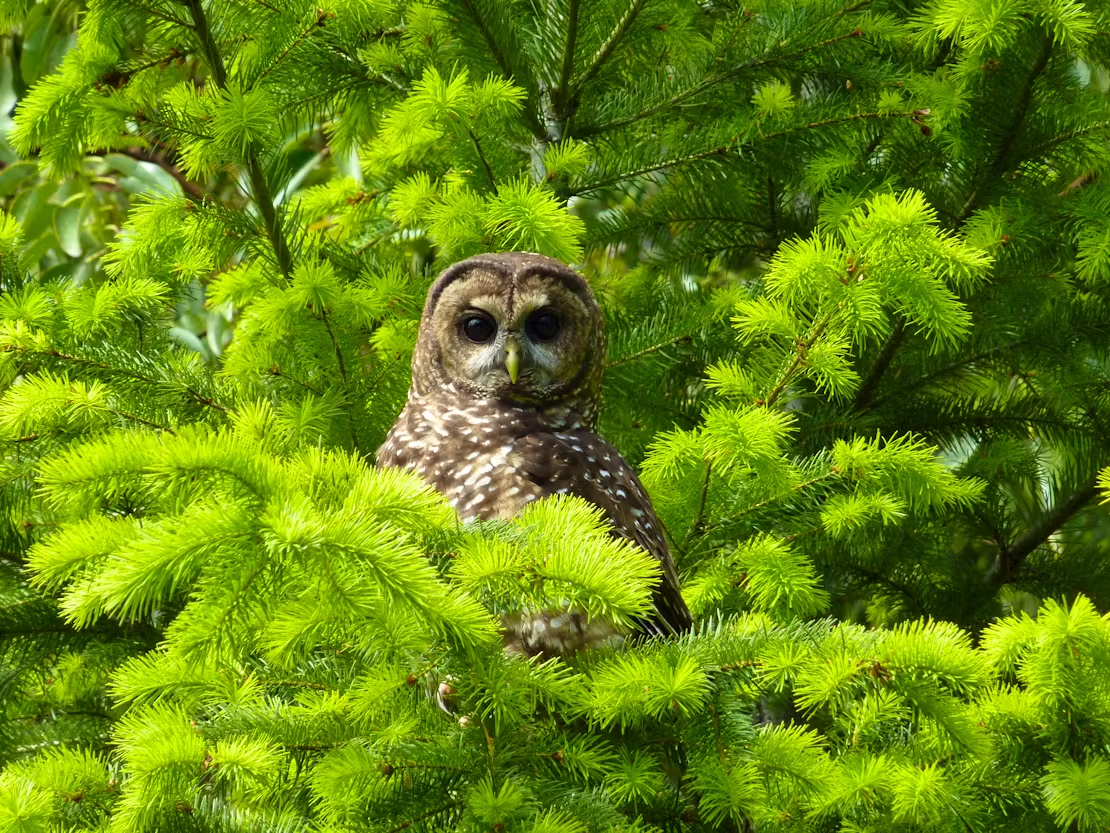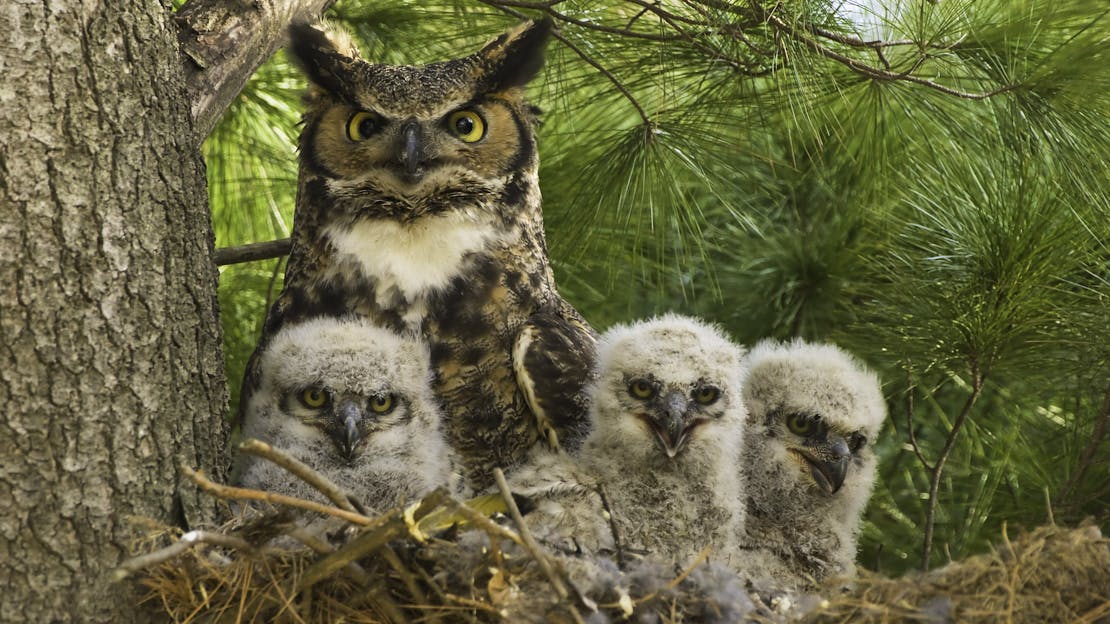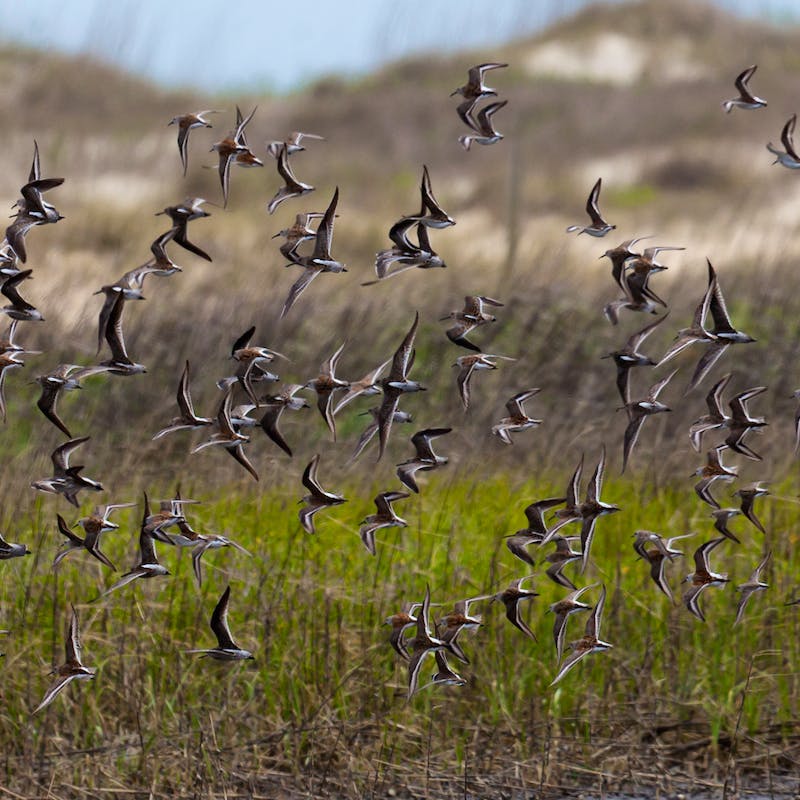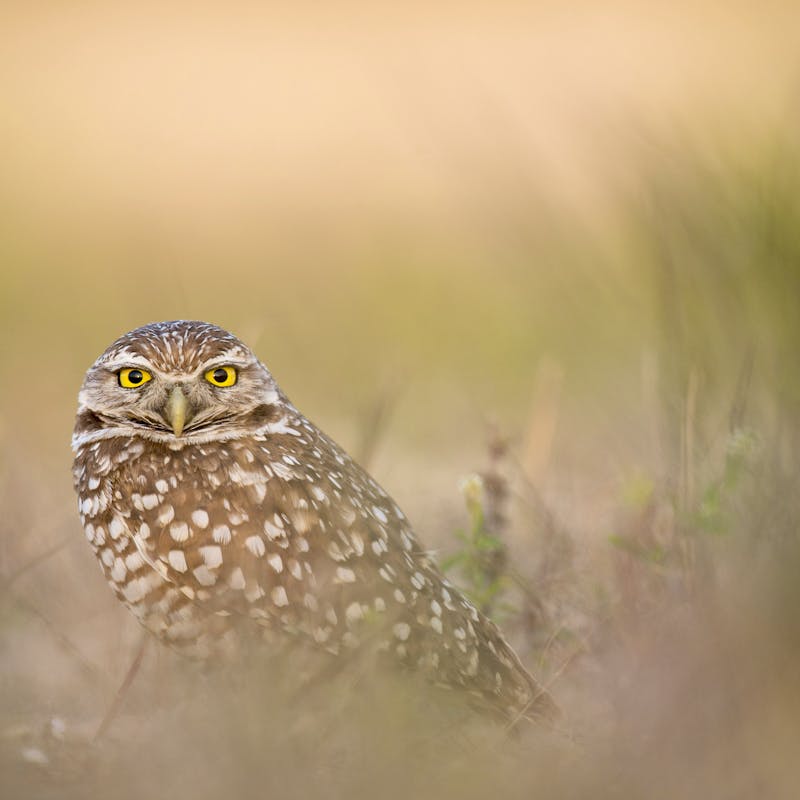Join our mobile Rapid Response Network!
You can be the first to hear about how we’re going to hold the next administration accountable and how you can fight back for wildlife!
Burrowing owls are so named because they live underground in burrows that have been dug out by small mammals like ground squirrels and prairie dogs. They are one of the smallest owls in North America and threatened by habitat destruction and land use change.
Snowy owls are mostly white with narrow, sparse brown bars and spots. They are among the largest North American owl species and threatened by climate change impacts to habitat and prey.
The northern spotted owl is dark-to-chestnut brown in color and sports round or oval white spots on its head, neck, back and under parts. Although it is often considered to be a medium-sized owl, the northern spotted owl ranks among the largest in North America and lives in old-growth forests. They are threatened by loss of habitat and logging, climate change and competition with increasing barred owl populations.
The cactus ferruginous pygmy owl is another tiny owl that is actually diurnal, unlike most other owls. Habitat loss, fragmentation, invasive species and lack of protection under the Endangered Species Act are threatening pygmy owls.
These owls are all threatened by habitat loss, fragmentation and human disturbance. Climate change, invasive species and other threats are also causing declining populations.
Northern spotted owls are threatened.
Burrowing owls and ferruginous pygmy owls are listed as least concern, spotted owls are near threatened and snowy owls are vulnerable.
Many owls are listed under Appendix I or Appendix II.

Defenders' Impact
Because of the significant declines of burrowing owls in the state of California, in April 2003, Defenders and other conservation groups petitioned the state of California to list the owl under the state's Endangered Species Act. Though the petition was unsuccessful, we continue to work on behalf of burrowing owls. In Florida, we are working to protect important habitat.
We are fighting to combat climate change and protect important Arctic habitat for snowy owls, like the Arctic National Wildlife Refuge.
In the Pacific Northwest, we are engaged in forest planning and habitat protections for the northern spotted owl.
Habitat loss landed cactus ferruginous pygmy-owls on the endangered species list in 1997—thanks to pressure from Defenders—but only until 2009, when developers succeeded in convincing a federal court that because pygmy owls exist in Mexico, they can go extinct in the United States. We are also fighting the border wall, which will separate populations of this little owl that doesn’t fly too far off the ground.
What You Can Do
Protect habitat, oppose the border wall and help fight climate change.

About
The range and habitat of these owls varies from the Arctic tundra to the old-growth forests of the Pacific Northwest to the arid desert of the Southwest and flat scrubland of Florida.
Estimates are fewer than 10,000 breeding pairs of burrowing owls.
Snowy owls number around 200,00 but an exact population is hard to determine.
The northern spotted owl has 1,200 pairs in Oregon, 560 pairs in northern California and 500 pairs in the state of Washington.
There are fewer than 50 pygmy owls in the United States.
Most owls are nocturnal, doing their hunting in evening, early morning or night hours. Snowy owls and burrowing owls hunt during the daytime. Owls are also often territorial, but burrowing owls live in loose colonies. Owls are silent fliers due to specialized feathers.
Reproduction varies between species. Snowy owl clutch sizes depend on availability of food. The lengths of time between hatching, fledging and leaving the nest are all different.
Owls eat smaller birds, rodents and other small mammals, snakes and other reptiles, and insects.
News

Defenders Issues Response to House Oversight Hearing on Wildlife Protection
Owls Blog Posts









